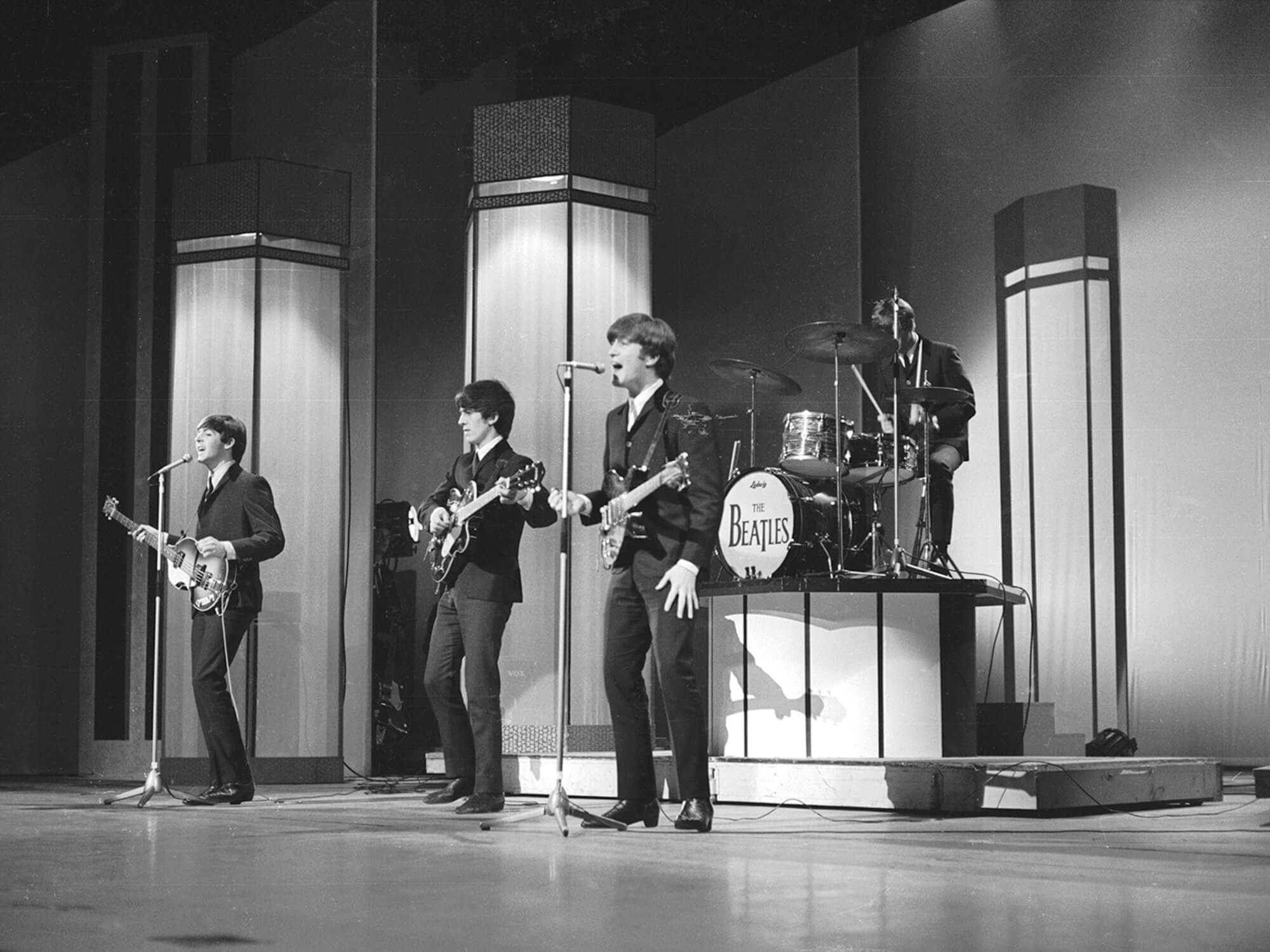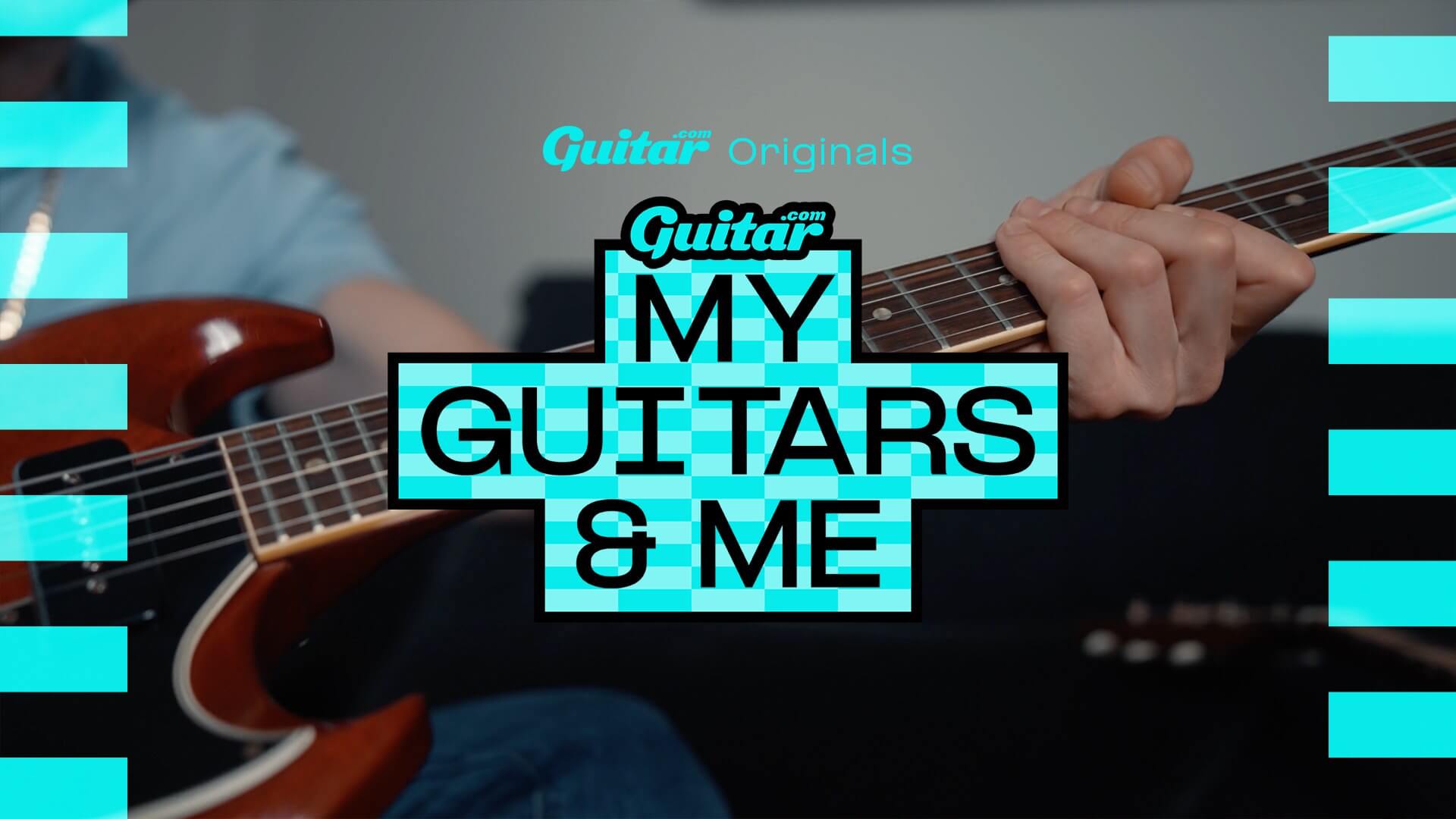From the Beatles to Prince, posthumous releases have been the story of 2023 – but should we be okay with them?
From massive acts like Van Halen and Prince, to smaller outfits such as Sparklehorse, the issue of posthumous releases has become a deadly serious business – but is there a right or wrong answer about the correct way to approach these albums?

The Beatles performing in 1965. Image: Les Lee/Express via Getty Images
“He released what he thought was worthy. I really don’t appreciate when you see certain artists pass and you see their families go through and just kind of release everything. It’s like, that’s not right, to me.”
Those were the rather unequivocal words of Wolfgang Van Halen, son of the late, great Edward Van Halen, when he was recently asked whether he had any plans to release any of the material in the band’s archive that hasn’t yet seen the light of day.
It’s a sharp contrast to what was said shortly after Van Halen passed away in 2020 at the age of 65. The man himself had previously told Rolling Stone that his 5150 studio archive contained nearly a million CDs and cassettes of unreleased music. Only days later, Van Halen’s manager Irving Azoff insisted that Wolf and brother Alex would collect the wealth of material remaining in the vaults and likely release it.
In 2022, former Van Halen bassist Michael Anthony told SiriusXM there was “a ton of stuff” that could be released, but obviously Wolfgang feels much more reticent to expand Van Halen’s legacy beyond the 12 studio albums his father left dating back to 1978.
“The stuff that’s there is the stuff that fell by the wayside, which, sure, people would probably find worth in it,” Wolfgang told BraveWords. “But without dad here, it feels unfair to make that assumption that anything should be… like that’s a decision that can’t be taken lightly.”

Memorial Day
On the other side of the argument, you have Sparklehorse – the beloved US indie-rock band driven by singer and guitarist Mark Linkous until he died by suicide in 2010. Before he tragically passed away, Linkous had begun work on what would have become the fifth Sparklehorse album with Steve Albini, which was nearly complete at the time of his passing.
Since his death, the only posthumous release from Linkous had been Dark Night Of The Soul – a collaboration with Danger Mouse (aka Brian Burton) was released four months after his passing. It was left to his surviving relatives – brother Matt and sister-in-law Melissa – to decide what to do with it. Now 13 years later, they’ve secured Albini’s blessing to complete the album as a tribute to Linkous’ talent and creativity.
That Dark Night… album pointed to a highly experimental, curious musician with an openness to off-kilter collaborations (David Lynch, Iggy Pop, Suzanne Vega and Pixies’ Black Francis), so there was some leeway with Bird Machine as far as finalising it for release. Resultingly, it is a bittersweet album that is brimming with Linkous’ tragi-comic, multilayered, texturally rich sonic personality. For all its subtle, posthumous additions of multitrack harmonies, it focuses on Linkous’ acoustic guitar, imperfect and endearing vocals, and toybox of unusual instruments (including a mellotron and fuzzy old microphones).

Estate Sale
Of course, when family is involved, it lends posthumous releases a certain degree of credibility and leeway – but it’s not always the case that an artist’s nearest and dearest are making the decisions.
Rather than family, it was publishing and recording labels that descended upon Prince’s Paisley Park vault of unreleased material after his tragic death in 2016. Prince released 39 albums in his lifetime, but he was a notoriously relentless creative – a constant fulcrum of new musical ideas created on his own or with collaborators both big and small.
Despite this, Prince was also extremely particular about the ways and means in which his music was released to the world – that’s why the vault at Paisley Park supposedly contains enough material to fuel decades of new Prince albums. But he was also, notoriously, a perfectionist – and many have raised serious questions about the ethics of putting new material out there.
In 2021, when Prince’s final album, Welcome 2 America was released to service a tax bill, his biographer, Neal Karlen was adamant that the record was never intended to see the light of day.

“Prince definitely wouldn’t want it out,” Karlen told Newsweek. “Still, I don’t think he’d be surprised. No matter how far out in the galaxy he seemed to operate, he always understood that the man had to be paid. [But] he didn’t want it released. For whatever reason he didn’t think it was worthy.”
And his former production manager told The Hollywood Reporter in 2016, “He always demanded the best. He never settled.”
In truth, Welcome 2 America is likely just the first salvo of posthumous Prince material – in mid-2022, after years of legal wrangling, Prince’s assets were divided between his three half-siblings, with the larger stake given to his publishing company, Primary Wave.
Subsequently, in late October this year, Diamonds and Pearls Super Deluxe Edition claimed 47 previously unreleased tracks (33 studio outtakes and 14 live recordings). Would an artist who tanked an entire completed album want us to hear his outtakes and studio digressions? Almost certainly not, but the artist who scrawled “Slave” across his cheek back in 1995 in response to him feeling like his record label had too much control over his work would likely not be surprised.

Family Ties
A fellow perfectionist, but one with a distinctly shorter career than Prince, is the late great Jeff Buckley, who tragically drowned in 1997, before he would ever see his only LP, Grace, turn him into a global star.
While Buckley had made several aborted attempts to record his second album, My Sweetheart The Drunk, nothing was ever completed to Buckley satisfaction. Nevertheless, his mother and executor of his estate, Mary Guibert, spearheaded an effort to release Buckley’s demos and the unfinished recordings, which came out as a compilation entitled Sketches for My Sweetheart the Drunk in 1998.
Guibert told The Guardian in 2021 that she’d initially veto’d an attempt by Sony to release Buckley’s scrapped recordings for the album made with Television’s Tom Verlaine in the producer’s chair, but a subsequent meeting between the label and Guibert resulted in a compromise: Verlaine’s recordings and Buckley’s more recent demos across a double-album spanning just over 90 minutes.
Grace was evidence that Buckley was a generational songwriter, singer and guitarist with a fierce, beautiful ability to rip your heart wide open and suture it back together with sensuous, sincere rawness. Sketches for My Sweetheart the Drunk showcases the unsatisfactory nature of these projects – with Buckley clearly struggling with a clear musical direction post-Grace (and with the album not yet a hit), the scrapped recordings are a shadow of what Buckley was capable of – lacking the pure emotive force of him in his groove.

Before Buckley, there was another tragic death of a young, exceptionally talented and beloved guitarist, singer and songwriter. Kurt Cobain died by suicide in 1994 at the peak of Nirvana’s popularity, and in the months after his tragic passing, the acoustic brilliance of their MTV Unplugged in New York performance was released, following its recording in November 1993 and broadcast in December.
At the same time, work was also underway on a second posthumous Nirvana live album which was compiled by drummer Dave Grohl and bassist Krist Novoselic under the title Verse Chorus Verse. The pair initially made great progress on the album, getting all the way to the mixing stage before the emotional turmoil of working on something so close to Kurt’s death caused them to abandon it.
But that wasn’t the end – two years later and with the pair having had time to process the loss of their friend, Grohl and Novoselic returned to the project, ripped it up and started from scratch. The result was From the Muddy Banks of the Wishkah – a glorious celebration of the riotous, wickedly compelling Cobain unleashed from his neuroses and self-consciousness to let loose on stage.
In the years since, however, Nirvana releases have been few and far between. The band’s ‘final’ track You Know You’re Right finally got an official release after it was leaked online in 2002 and then appeared on the band’s first (and only) hits compilation later that year.

Various demos and rarities have appeared in anniversary editions of Nirvana’s albums over the ensuing decades, but broadly Cobain’s widow – the Hole guitarist Courtney Love – has been reticent to exploit Nirvana’s back catalogue for its stratospheric earning potential.
As she told Australia’s Sunday Style magazine in 2014, she’s rejected lucrative offers from fast food businesses, movies and various other retail outlets to use Nirvana songs: “We’ve been offered $6 million for 18 seconds of one Nirvana song and I turned it down.”
Frances Bean Cobain summed up the diabolical cultural conundrum in 2015 when she revealed how exponentially her father’s mythology had eclipsed Kurt, the flawed father she knew. After all, whether it’s Sparklehorse, Van Halen, Hendrix or Morrison, they are vastly easier to idolise once they’re no longer here to let their human weaknesses sully the worship of fans.
“He’s larger than life and our culture is obsessed with dead musicians,” Bean told NME. “We love to put them on a pedestal. If Kurt had just been another guy who abandoned his family in the most awful way possible… But he wasn’t.”
She added, “He became even bigger after he died than he was when he was alive. You don’t think it could have gotten any bigger. But it did.”

Milk It
While the likes of Van Halen and Nirvana have not – to date – rinsed the archives to provide fans with a steady stream of ‘new’ unreleased material to enjoy and pore over, that’s certainly not the approach that the estate of every legendary guitarist has taken.
Irish blues icon Rory Gallagher has released no less than 13 posthumous albums since his passing in 1995, plus four box sets and a host of live DVDs – these projects have been overseen by Rory’s brother Donal and recently his nephew Daniel, who pride themselves on being good stewards of the famously prolific Gallagher.
And of course it would be remiss to talk about iconic guitarists who left fans wanting more without bringing up Jimi Hendrix. When Hendrix died in September 1970, he’d released three studio albums and a single live record. In the decades since, there’s been an additional 85 posthumous albums made up of outtakes, live recordings and compilations.
Like Sparklehorse, Hendrix had been in the process of making an album before his death. Those recordings, intended for First Rays of the New Rising Sun, were instead released in 1971 as The Cry of Love. The same year, five more albums were released. The Cry of Love was compiled by Hendrix’s engineer Eddie Kramer, Jimi Hendrix Experience drummer Mitch Mitchell, and his manager Michael Jeffrey. Mitchell had been present and on duty throughout the recordings for First Rays of the New Rising Sun, so he was privy to Hendrix’s guidance, intentions, and responses to those recordings.

Kramer has been further involved in several more posthumous Hendrix albums – not least the series of unreleased tracks that arrived from 2010 onwards, but it does raise the question of how much is too much?
Would Hendrix have really wanted every scrap of discarded studio jamming to be worked up into something meaningful and commercially viable? We can’t say of course, but it does feel that the further we get from the source in terms of time and personnel, the less it feels like we’re respecting the artist’s original intentions.
Would Hendrix have abided by a handful of studio musicians he’d never met over-dubbing his recordings? You would imagine not, but Crash Landing still hit shelves in 1975. Jim Morrison would surely have kiboshed The Doors recording a lacklustre accompaniment to his recorded poetry readings on American Prayer in 1978, too.

Then Again
Perhaps the biggest musical story of the year gives us a glimpse into how we’d all rather it be done. The Beatles’ ‘final’ single, Now & Then sharply divided fans and casuals alike with its use of AI to clean up the vocals of a discarded John Lennon demo that the surviving three Beatles had worked on back in the 90s with no success.
The story is almost too perfect for a posthumous release – back in the 90s Yoko Ono found a tape with ‘For Paul’ written on it that contained four song sketches, two of which became Free As A Bird and Real Love worked up into full tracks by the surviving Beatles in 1995 for the Anthology releases.
Harrison sadly died in 2001 and it was widely accepted that there would be no more Beatles songs released after that – until technology intervened and AI was used to clean up the sound quality of the demo that Harrison had at the time described as “fucking rubbish”.
Thus, with the blessing of Lennon and Harrison’s families, Paul McCartney and Ringo Starr began work on making Now & Then a full song – utilising Lennon’s vocals and guitar parts laid down on that fateful afternoon in 1995 by Harrison.
If only all posthumous releases could have such an iron-clad chain coming back to the artist’s original intent and desire, but of course that’s rarely the case – and as such we see a lot of material making its way into the world that surely would not have passed muster with the artist themselves.
Ultimately though, it’s hard to blame the labels, estates and surviving members of these acts for producing these posthumous albums – they are simply responding to demand, and if we as fans find that a little tasteless, then there’s a very simple way to make them stop. We stop buying them, and stop listening to them – but that’s easier said than done when you’re a superfan…



